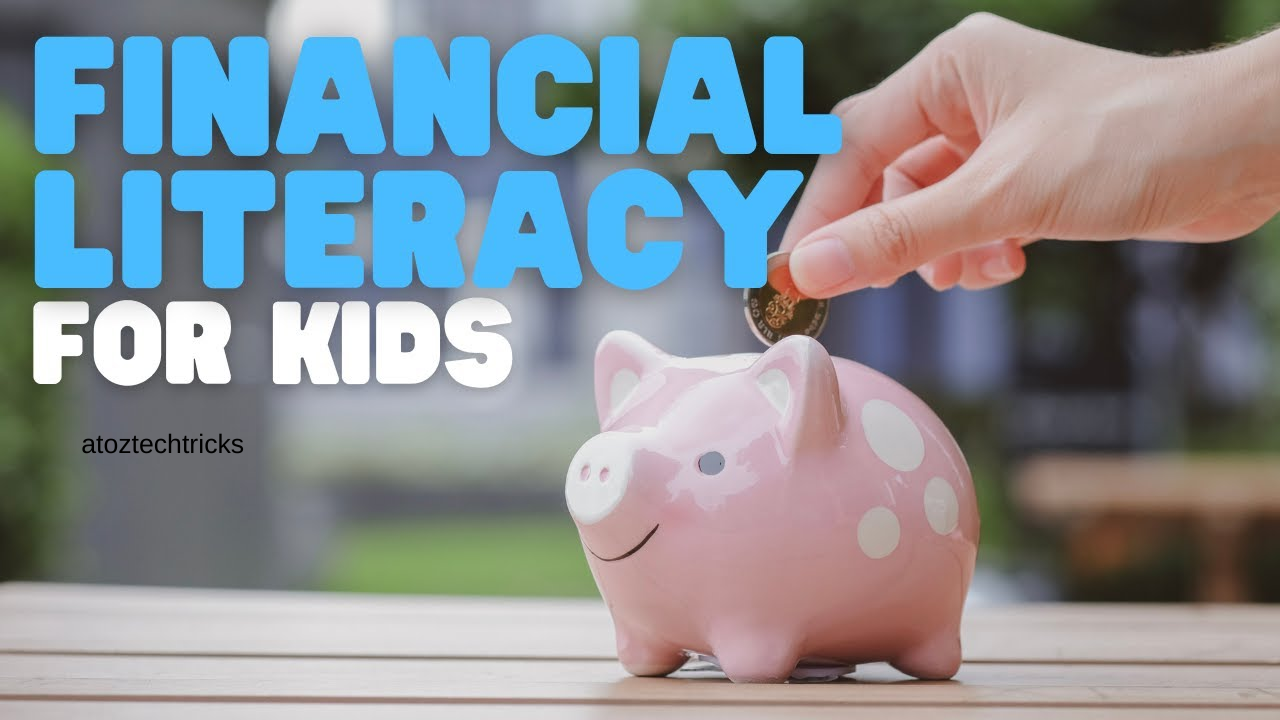College Savings: A Comprehensive Guide to Building a Future Fund
College education is one of the most significant investments parents can make in their child’s future. However, the cost of higher education continues to rise, making it more important than ever to plan and save effectively. College savings are not just about accumulating funds but also about making informed decisions on where and how to save. This guide provides an in-depth look at the various options available, strategies for maximizing your savings, and tips to ensure that your child can afford the education they deserve.
The Rising Cost of College Education
Before diving into the methods of saving for college, it’s crucial to understand the context of why saving is necessary. Over the past few decades, the cost of college education has skyrocketed. According to the College Board, the average cost for tuition, fees, room, and board for the 2023-2024 academic year was approximately $27,000 per year for in-state students at public universities and over $55,000 per year at private colleges. These figures do not include additional expenses like textbooks, transportation, and personal expenses, which can add several thousand dollars to the total cost.

Factors Contributing to Rising Costs
Several factors contribute to the increasing cost of college education:
- Administrative Expenses: Colleges and universities have seen a significant increase in administrative costs, which include salaries for non-teaching staff, facility maintenance, and other operational expenses.
- Decreased State Funding: Public universities have experienced reductions in state funding, which shifts more of the financial burden onto students and their families.
- Increased Demand: The demand for higher education has grown, with more students pursuing college degrees. This increased demand has driven up the costs of maintaining and expanding campus facilities and resources.
- Technological Advancements: The integration of technology into education, while beneficial, has also added to the cost structure of colleges, as institutions must invest in and maintain advanced technological infrastructure.
The Impact on Families
The rising cost of college has made it increasingly difficult for many families to afford higher education without significant financial aid, scholarships, or loans. As a result, students are graduating with higher levels of debt, which can impact their financial well-being for years to come. This underscores the importance of starting a college savings plan as early as possible to minimize the reliance on loans and reduce the financial strain on both parents and students.
Understanding College Savings Plans
There are several options available for parents looking to save for their child’s college education. Understanding the pros and cons of each can help you make the best decision for your family’s financial situation.
529 College Savings Plans
The 529 plan is one of the most popular college savings options available. Named after Section 529 of the Internal Revenue Code, these plans offer tax advantages that make them an attractive choice for many families.
Benefits of a 529 Plan
- Tax Advantages: Contributions to a 529 plan are made with after-tax dollars, but the earnings grow tax-free. Additionally, withdrawals used for qualified education expenses are not subject to federal income tax.
- High Contribution Limits: Unlike some other savings vehicles, 529 plans typically have high contribution limits, allowing you to save a substantial amount for your child’s education.
- Flexibility: 529 plans can be used for a wide range of education expenses, including tuition, fees, room and board, and even K-12 education in some cases.
- Control: As the account owner, you maintain control over the funds, even after your child reaches adulthood.
- Portability: If your child does not use the funds, you can transfer the account to another beneficiary, such as a sibling or even yourself, without penalty.
Drawbacks of a 529 Plan
- Limited Investment Options: 529 plans offer a limited selection of investment options, which may not appeal to those looking for more control over their investments.
- Impact on Financial Aid: While 529 plans are generally considered a parental asset and have a relatively low impact on financial aid eligibility, they can still reduce the amount of need-based aid your child might receive.
- Penalties for Non-Educational Use: If the funds are not used for qualified education expenses, the earnings are subject to income tax and a 10% penalty.

Coverdell Education Savings Account (ESA)
The Coverdell ESA is another tax-advantaged savings account designed specifically for education expenses. However, it has some distinct differences from the 529 plan.
Benefits of a Coverdell ESA
- Tax Advantages: Like 529 plans, Coverdell ESAs offer tax-free growth and tax-free withdrawals for qualified education expenses.
- Investment Flexibility: Coverdell ESAs typically offer a wider range of investment options compared to 529 plans, including stocks, bonds, and mutual funds.
- Use for K-12 Expenses: In addition to college expenses, Coverdell ESAs can be used to pay for K-12 education expenses, such as private school tuition and tutoring.
Drawbacks of a Coverdell ESA
- Contribution Limits: The annual contribution limit for a Coverdell ESA is relatively low, currently capped at $2,000 per beneficiary per year.
- Income Limits: There are income restrictions for contributors, which may limit the ability of higher-income families to take advantage of this savings vehicle.
- Age Limitations: Contributions can only be made until the beneficiary turns 18, and the funds must be used by the time the beneficiary turns 30, or they will be subject to taxes and penalties.
Estimating College Costs: A Comprehensive Guide for Future Students and Their Families
Custodial Accounts (UGMA/UTMA)
Custodial accounts, such as Uniform Gifts to Minors Act (UGMA) and Uniform Transfers to Minors Act (UTMA) accounts, are another option for college savings. These accounts are established in the child’s name, with the parent or guardian acting as the custodian.
Benefits of Custodial Accounts
- No Contribution Limits: There are no contribution limits for UGMA or UTMA accounts, allowing for potentially large savings.
- Investment Flexibility: These accounts offer a wide range of investment options, including stocks, bonds, and mutual funds.
- No Restrictions on Use: The funds in a custodial account can be used for any purpose, not just education expenses.
Drawbacks of Custodial Accounts
- Lack of Control: Once the child reaches the age of majority (typically 18 or 21, depending on the state), they gain full control of the account and can use the funds as they wish, regardless of the custodian’s intentions.
- Impact on Financial Aid: Custodial accounts are considered the student’s asset, which can significantly reduce their eligibility for need-based financial aid.
- Tax Implications: While the first $1,100 of unearned income in a custodial account is tax-free and the next $1,100 is taxed at the child’s rate, any additional income is taxed at the parent’s rate, which can diminish the tax advantages of these accounts.
Roth IRA
While traditionally used for retirement savings, a Roth IRA can also be an effective vehicle for college savings.
Benefits of Using a Roth IRA for College Savings
- Tax-Free Withdrawals: Contributions to a Roth IRA can be withdrawn at any time without penalty, and earnings can be withdrawn tax-free if used for qualified education expenses.
- Flexibility: If the funds are not needed for education, they can remain in the account and continue to grow tax-free for retirement.
- No Impact on Financial Aid: Retirement accounts, including Roth IRAs, are not considered in the calculation of financial aid eligibility, which can preserve your child’s ability to receive need-based aid.
Drawbacks of Using a Roth IRA for College Savings
- Contribution Limits: The annual contribution limit for a Roth IRA is relatively low ($6,500 for individuals under 50 and $7,500 for those 50 and older in 2024), which may not be sufficient for significant college savings.
- Income Limits: There are income limits for contributing to a Roth IRA, which may restrict the ability of higher-income families to use this option.
- Penalties for Early Withdrawals: While contributions can be withdrawn at any time, earnings withdrawn for non-educational expenses before age 59½ may be subject to taxes and penalties.

Strategies for Maximizing College Savings
Regardless of which savings vehicle you choose, certain strategies can help maximize the amount you save for your child’s education.
Start Early
The most effective way to build a significant college savings fund is to start as early as possible. The power of compound interest means that the earlier you start saving, the more time your money has to grow. For example, if you start saving $200 per month when your child is born, and you earn an average annual return of 6%, you could accumulate over $76,000 by the time your child turns 18.
Automate Your Savings
One of the easiest ways to ensure consistent contributions to your college savings fund is to automate your savings. Set up automatic transfers from your checking account to your college savings account regularly, such as monthly or bi-weekly. This way, you won’t have to remember to make contributions, and you’re less likely to skip a payment.
Take Advantage of Employer Benefits
Some employers offer education savings benefits, such as matching contributions to a 529 plan or providing scholarships for employees’ children. Be sure to explore any benefits your employer may offer and take full advantage of them.
Utilize Windfalls
If you receive a financial windfall, such as a tax refund, bonus, or inheritance, consider putting a portion of it toward your child’s college savings. These lump-sum contributions can significantly boost your savings and help you reach your goal faster.
Involve Family and Friends
Family and friends often want to contribute to a child’s future, especially for special occasions like birthdays and holidays. Consider encouraging them to make a contribution to your child’s college savings account instead of purchasing toys or other gifts. Many 529 plans offer gift-giving platforms that make it easy for others to contribute.
Regularly Review and Adjust Your Plan
Your financial situation and goals may change over time, so it’s important to regularly review your college savings plan and make adjustments as needed. This might include increasing your contributions, reallocating your investments, or even switching to a different savings vehicle if your current one no longer meets your needs.
Balancing College Savings with Other Financial Goals
While saving for college is important, it’s also crucial to balance this goal with other financial priorities. Here are some tips for finding the right balance.
Prioritize Retirement Savings
As important as it is to save for your child’s education, your retirement should take precedence. Your child can take out loans or apply for scholarships to cover the cost of college, but there are no loans available for retirement. Make sure you’re contributing to your retirement accounts, such as a 401(k) or IRA, before allocating funds to college savings.
Build an Emergency Fund
Before focusing on college savings, ensure that you have an adequate emergency fund in place. An emergency fund should cover three to six months’ worth of living expenses and provide a financial cushion in case of unexpected events, such as job loss or medical emergencies.
Avoid Taking on Debt
While it may be tempting to borrow money or use credit to fund your child’s education, this can lead to long-term financial strain. Instead, focus on saving as much as possible and explore other options, such as scholarships, grants, and work-study programs, to help cover the cost of college.
Consider Your Child’s Contributions
Depending on your family’s financial situation, it may be reasonable to expect your child to contribute to their education expenses. This could include working part-time during high school and college, applying for scholarships, or taking out student loans.
Financial Aid and Scholarships
While saving for college is essential, it’s also important to explore financial aid and scholarship opportunities to help offset the cost.
Understanding Financial Aid
Financial aid comes in several forms, including grants, scholarships, work-study programs, and loans. The Free Application for Federal Student Aid (FAFSA) is the first step in applying for most forms of financial aid. It’s important to complete the FAFSA as early as possible to maximize your chances of receiving aid.
Types of Scholarships
Scholarships are a form of financial aid that does not need to be repaid. They are typically awarded based on merit, need, or a combination of both. There are thousands of scholarships available, ranging from small, one-time awards to full-tuition scholarships. Encourage your child to apply for as many scholarships as possible, as even small awards can add up over time.
Work-Study Programs
Work-study programs provide students with part-time jobs while they are enrolled in school. These jobs are typically related to the student’s field of study and offer valuable work experience in addition to financial assistance.
Saving for college is a significant financial commitment, but with careful planning and the right strategies, it’s possible to build a substantial college fund that will help your child achieve their educational goals. Whether you choose a 529 plan, a Coverdell ESA, a custodial account, or another savings vehicle, the key is to start early, save consistently, and take advantage of every opportunity to maximize your savings. Balancing college savings with other financial goals, such as retirement and emergency savings, will ensure that you can provide for your child’s future without compromising your finances. With a solid plan in place, you can help your child graduate with the education they need and the financial freedom to start their journey out of the burden of overwhelming student debt.




Post Comment